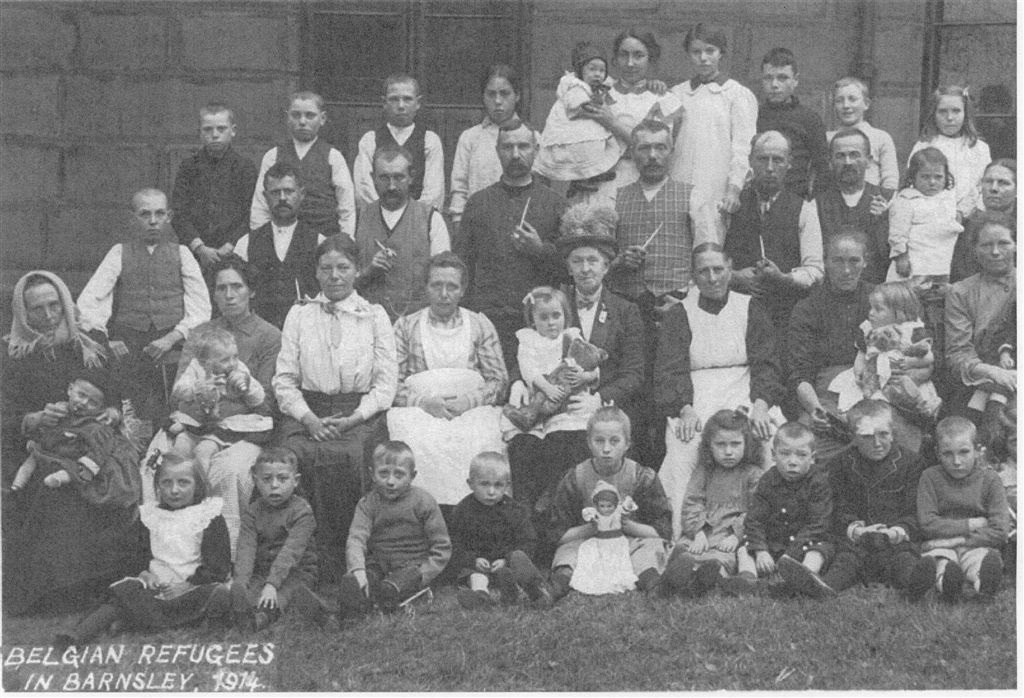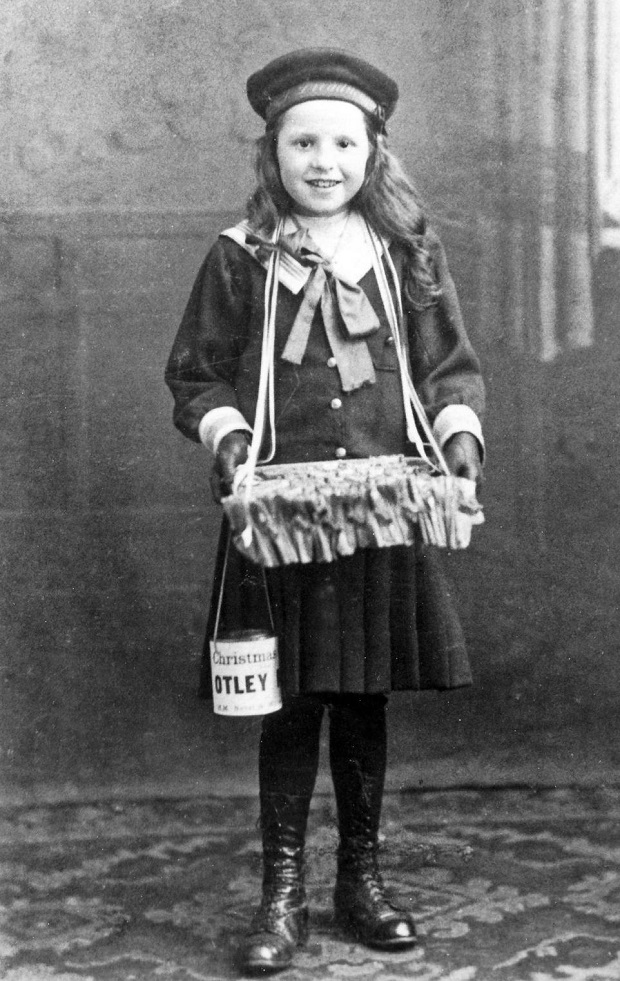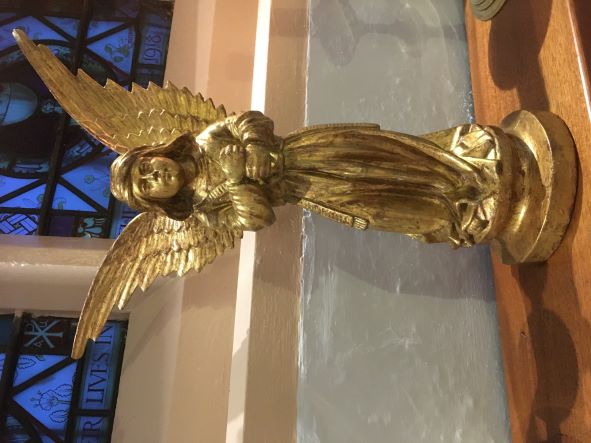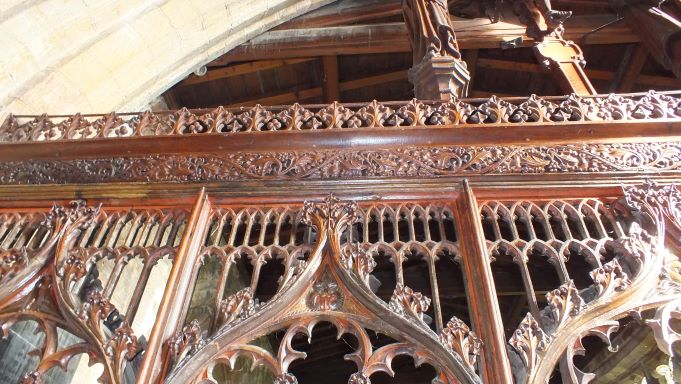- Daily & Weekly newsletters
- Buy & download The Bulletin
- Comment on our articles
Remembrance: The untold story of Belgian refugees in Britain during World War One
During World War One, a quarter of a million Belgian men, women and children sought sanctuary in Britain. The number remains to this day the largest influx of refugees in UK history.
Escaping wartime occupation in their home country, they settled in towns, villages and cities across Britain, leaving a huge and positive cultural mark on their adopted land. With the majority of these refugees returning to their homeland in peace time, their influence has remained relatively little-known and rarely written about.
A hundred years later, a collaborative campaign was launched by academics from the universities of Leuven (KUL) and Leeds, to trace these people and their relatives, and uncover the stories of their frequently difficult times in exile.
Soon after the outbreak of World War One, a German military operation was carried out, later known as the Schlieffen Plan. The intention was to invade Belgium, leaving the gate open to advance into France. Underestimation of the strength of Allied armies and sound intelligence gathering meant it ultimately failed. Although several resistance movements in Belgium were quickly assembled, the German army occupied much of the country.
Outbreak of war in Belgium sparked exodus
With a bleak future on the horizon, many Belgians reluctantly fled to neighbouring countries, including France and Netherlands. All able-bodied men were forced to join Allied troops fighting on the Western front, and leave their families behind.
Around 250,000 refugees arrived in Britain with few possessions and little in the way of cash. With the British Government ‘s war coffers already depleted, there was a widespread call for public donations to help house, fund, clothe and feed the refugees. They were largely welcomed with open arms as the refugees were a reminder of the reason why Britain was at war; the government having long promised to protect neutral Belgium. Hastily assembled make-shift registration centres were established in London, the first port of call for refugees after arriving at the coastal town of Folkestone. They were then dispersed across the UK to take up jobs and establish new homes.

Many refugees settled in the north
More than 1,000 refugees settled in the Yorkshire town of Leeds, which has a particular mention in official records. Local daily paper, The Yorkshire Post, reported at the time that: “friends would gladly contribute to the increasing necessities of our Belgian visitors.”
Some Britons travelled across the Channel to assist refugees in their arduous journey. Dorothy Ratcliffe, a Leeds mayor, was among them as her proficiency in French was an obvious asset. After the fall of Antwerp in 1914, she helped René Lefevre, a 27-year-old man at the city’s Central Station, recalling that his skin was sallow through lack of food and his clothes were ‘much too light’ for the Yorkshire climate. René was a musician who had lost his violin so Ratcliffe helped him search for it although to no avail. Once settled in Leeds, she gave him her own violin and Lefevre later joined the Leeds Symphony Orchestra.
The Yorkshire Post reported on another act of kindness by the Pontefract Lane Quaker Adult School, which pledged board and tuition to 30 women and children. Leeds was fêted for its success in finding accommodation for the growing number of new arrivals. The nearby market town of Otley gave a particular hearty greeting to Belgian refugees; more than 1,000 people set up the Otley Belgian Hospitality Committee in an effort to settle people from ‘gallant Belgium’. Hundreds of people gathered on the platforms of the town’s railway station in an act of solidarity for the refugees.
A depletion of the British male workforce - away fighting on the continent – resulted in a heavy demand for labour, particularly in the north of England. Munitions minister David Lloyd George put out an urgent call for new factories to manufacture artillery shells. Belgium was a European leader in the manufacture of armaments. Many skilled Belgian men and women took up the mantle and headed to Birtley in County Durham.

A nearby village was hastily built for them and given the name Elisabethville after the Queen of Belgium. Families lived in prefabricated houses complete with running water and indoor toilets (pictured). The village was even declared an independent sovereign state. Belgian laws were the norm, streets were given Low Country names and the Franc was legal tender in shops and pubs. Refugees were encouraged to use their native languages of French and Flemish. Similar enclaves across the country, including parts of London, were also designated ‘little Belgium’, possessing their own schools, community halls and sport and drama clubs.
Tensions between Belgian refugees and their hosts
Belgian expertise was also maximised in mines, shops, cafes, farming, shipbuilding and craft industries. Their hard working ethic, knowledge and skills were incalculable, but as the war dragged on, tensions increased between migrants and their hosts. Some British people were jealous of the living wage they received and the seemingly comfortable lifestyle they were enjoying. Others were critical that they were not fighting on the Western Front and hurled the word ‘cowards’ at them, ignoring the fact that many Belgian men who arrived on British shores were ill, disabled or had been badly wounded in the conflict. Back in their homeland, they were derided by their compatriots for abandoning Belgium when it desperately needed a healthy workforce.

Others complained they were patronised and treated as ‘pets’ and subjected to the phrase ‘poor little Belgians’ by their British hosts. The reality of the supposedly idyllic life offered in places such as Elisabethville portrayed a different picture. Refugees needed special permission to leave the village and were forced to wear their uniforms to distinguish them from the locals, which often resulted in verbal and even physical confrontations. Belgian farmhands in Lincolnshire spoke out about receiving lower wages than their British counterparts, and other refugees voiced their concern over unfair working conditions.
Post-war return to the homeland
When World War one finally came to an end, more than 90% of the 250,000 refugees in Britain were eager to return to help rebuild their home country. But Belgian state officials declared priority would be given to those who could help with the reconstruction. For babies and young children born outside of Belgium, bureaucracy hindered a swift and smooth return. The homeward journey was gradual and frustrating for civilians who had left the country of their birth out of necessity.
Following the war, Elisabethville was quietly abandoned; its existence remaining a secret for years. Many disenchanted Belgians left little in the way of written evidence of their time in the UK and few personal diaries came to light, according to historians. A cross-cultural study aimed at piecing together the fragmented story of Anglo-Belgian history during World War One was established by Dr Christophe Declercq of KUL, along with his counterparts from the University of Leeds. Declercq has appealed to relatives of refugees to provide more information for the study in order to increase the research and understanding of this little-known and complex aspect of the war.
New respect for Belgians’ legacy in Britain
But up and down Britain, local communities have quietly cherished and celebrated memories of the refugees. The plethora of memorials, statues and plaques honouring them, serve as permanent visible reminders of the respect and gratitude for the migrants, and it has been reciprocated. Otley’s Victorian Jubilee clock includes a plaque paid for by Belgian refugees who were immensely grateful they had been given a safe home in the town. A corner of Otley Museum now proudly displays luggage, photos and other memorabilia, in a bid to keep this important period of history alive.

In 2021, an episode of the popular BBC make do and mend programme: The Repair Shop, featured four beautifully carved wooden angels (pictured). They were made by Belgian refugees in 1915 who had gifted them to a Lincolnshire church. The angels were carved in memory of Reverend Edgar Tor Hudson, a former vicar of Gosberton Clough’s Gilbert and St Hugh’s Parish Church. Experts from the programme painstakingly repaired the figures and a special unveiling ceremony was carried out in front of a large crowd at the church.
Reverend Ian Walters, the now retired vicar of St Gilbert and St Hugh’s, told The Bulletin it was thanks to The Repair Shop that visitors from far and wide now regularly come to the church, asking about the angels and the refugees’ experience on British soil. The angels, he said, have been a catalyst for interest in the positive influence Belgium has left on Britain.

Neighbouring Gosberton Church houses an ornate wood carved screen (pictured), an example of sublime craftsmanship by refugees who lived in the parish during World War One. They also carved a pulpit in a nearby church in the village of Pinchbeck, near Spalding.
The impact the refugees had on the city of Leeds is still in evidence. A recent exhibition of Belgian wartime works of arts and crafts proved extremely popular. Former curator of Leeds City Museum, Ruth Martin, said: “What is certain is that the history of Leeds has been enriched by those who came here. Each of them played their part in shaping our city and left behind a lasting legacy.”
If you are a relative of a Belgian refugee or related to someone who housed them in Britain, Netherlands or France, or if you simply want more information, visit the database belgianrefugees.leeds.ac.uk
And if you would like to share any information about this story with The Bulletin, please contact editorial@thebulletin.be
Photos: (main image) Yvonne de Broch, aged 7, Otley 1915 © Otley Museum; Belgian refugees in Barnsley © Experience Barnsley Museum; Elisabethville © Economic and Social Research Council; carved angels and screen, courtesy Geoff Reynolds
Kim Revill is the author of 111 Places in Leeds That You Shouldn't Miss


















